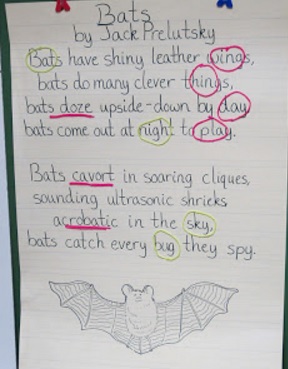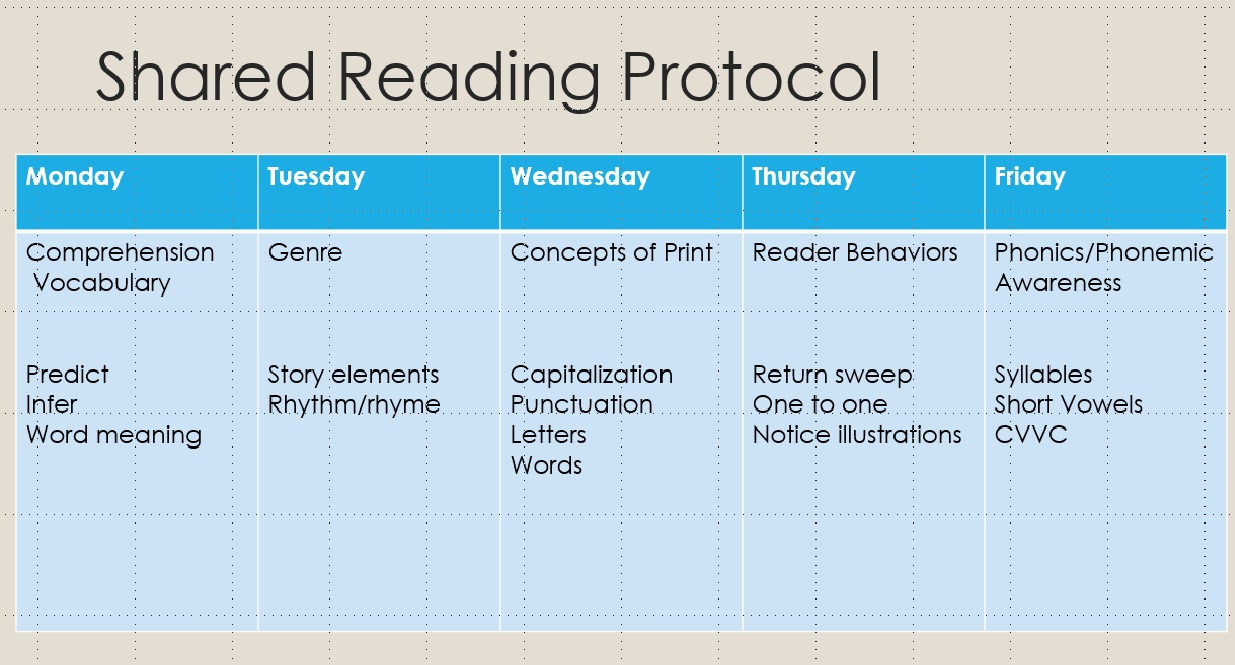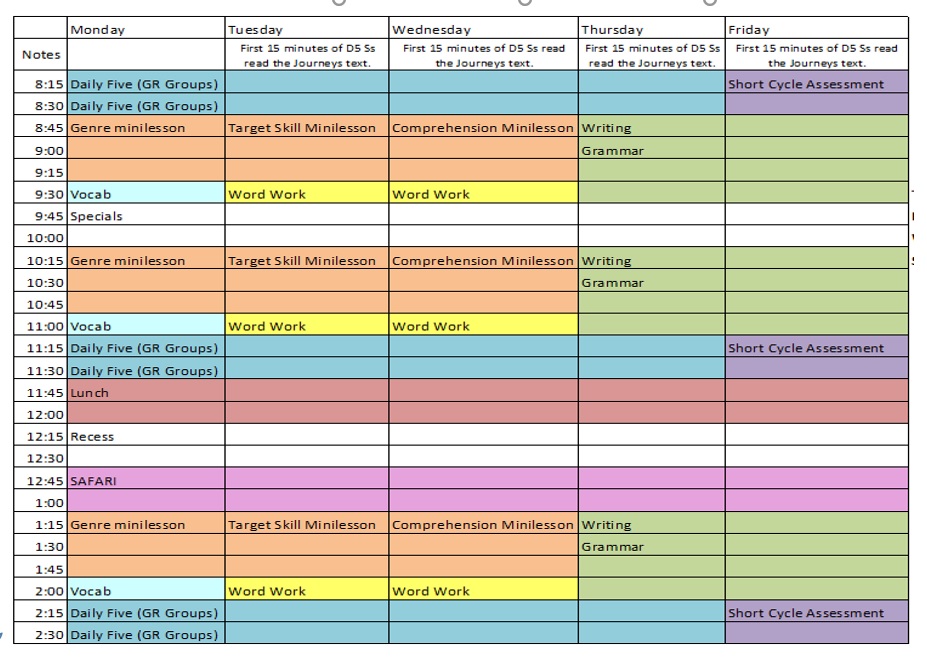When have teachers ever been asked to do less? At the beginning of each school year, new initiatives are rolled out, multiple resources are prescribed, numerous trainings are scheduled, stacks of forms are introduced and teachers start out feeling crushed beneath the weight of it all.
Never, I repeat never, are teachers asked to take anything off their already overburdened schedule and list of responsibilities. It’s often more of the same when teachers return from the winter holiday break.
We’re going to fix that right now, however. You ready?
This year. In 2017. You can do less.
We’re going to revisit responsibility versus accountability. I blogged about it here in 2015 and I still believe it’s a discussion that will help teachers to make adjustments so that they are not forever feeling harassed and stressed out.
How do you distinguish responsibility from accountability and how does this impact your practices? (Thank you to Dr. Mary Howard, Jenn Hayhurst and Amy Brennan for their amazing Good to Great Twitter chat series that posed this question back in the summer of 2015.)
The distinct difference between the two is that responsibility is about taking complete ownership for facilitating learning for every student inside the classroom. Accountability is about the willingness to hold to an agreement or expectations from people in education and policymaking crafted outside the classroom.
Let me share a real-life example to drive the point home.
Years ago, I taught kindergarten in a Title I school with the largest number of at-risk students in that district. I was expected to comply with the district mandate of using Saxon Phonics to teach kindergarten students how to decode. This instruction for kindergarten students was intended to lead to mastery on an end of year early reading assessment.
I liked parts of Saxon Phonics. I didn’t like the endless worksheets and drilling protocols with flash cards and I worried about my students comprehending what they read as the program didn’t really provide strong instructional resources in helping students tackle the ultimate goal of reading; making meaning of text.
Never at any time, did anyone in the district leadership say that I was accountable for facilitating an environment in which kids would learn to LOVE to read. I wasn’t held accountable for that. And yet, I knew, that in order to grow as readers, students needed to be immersed in a variety of great fiction and nonfiction texts.
So, I was accountable to the district for using Saxon Phonics. But I also felt I was responsible for creating an environment where book love was fostered. I was tasked with growing early readers who could read accurately, comprehend the text (the accountability bit) and gain an unbridled fascination with books in order to sustain a life-long love of reading (the responsibility bit).
What to do? I thought about it long and hard because I knew throwing out the phonics instruction was not a good idea. Students need instruction in the mechanics of reading, but they need it in a way that makes sense and is at least a tiny bit enjoyable. They also need a clear understanding of how learning individual phonemes leads to the love “stuff” i.e., loving books, living to read.
My kindergarten team talked about this dilemma a lot. We always came to the same conclusion—not enough time to do both. It just didn’t seem possible to complete the phonics lessons as they were prescribed and still commit to multiple read-alouds during the day with plenty of time for self-selected independent reading by our students.
I decided to die on the responsibility hill.
It seemed like I could still use direct teach with the whole class using an abbreviated lesson from the phonics program and then use my shared reading time to allow students to apply their new phoneme knowledge to an actual text.
It worked.

We used poems, song lyrics, short texts to apply knowledge of the new phonemes they were learning. The shared reading text stayed the same all week, but each day we had a different focus. Every day I read the text, shared a few minutes of targeted instruction and we finished with students reading the text again with me.
On Monday I read the text twice and then introduced new vocabulary and defined the genre. Tuesday we applied our new phonics knowledge by underlining or circling the phonemes in the text. (We made that fun and engaging by using Wiki-Stix or highlighter tape.) Wednesday we looked for rhyming words if the text was a poem or lyrics. If it was a short excerpt from a narrative or nonfiction text that week, we looked for elements of the genre. Thursday and Friday we learned strategies for making deep meaning. The weekly protocol for shared reading stayed consistent and I saw huge gains in my young readers’ abilities to read accurately and comprehend the text.

I recovered some much needed minutes in my schedule to read aloud to my students and added to the amount of time they were allowed to read independently. That experience showed me how I could begin to make the difficult decision of complying yet, at the same time, doing what I knew was best for young readers.
Now that I coach, the number one thing teachers constantly relate to me is that they do not feel like they have enough time to adequately cover it all. And they are right. They don’t have enough time to do it all.
Often, with the teacher’s permission, I share a nifty little Excel document that helps to visualize the process of how to DO LESS.

Here’s how the process works. You can try it yourself by–
- Filling in the spreadsheet based on what your current schedule looks like.
- Asking yourself what you are leaving out that you know (based on research) kids need in order to be readers who love to read and have the skills to make that happen.
- Making a list of those critical bits you feel responsible for including in your schedule.
- Getting help by collaborating with people you trust. Asking people like you who know from a lot of professional reading what is absolutely best for kids.
- Going back into the spreadsheet and looking for ways to innovate in order to tweak accountability bits and give more time for the responsibility bits.
- Creating a new plan for student learning.
When you take the time to do this, I promise you’ll weed out some of the things in your current schedule that are not in line with the personal, professional items on your responsibility list for growing scholars.
If this seems overwhelming or absolutely not “doable”, please get in touch with me and let’s talk. Making a commitment to finding ways to do less will free you up to choose authentic learning opportunities for all your students.









